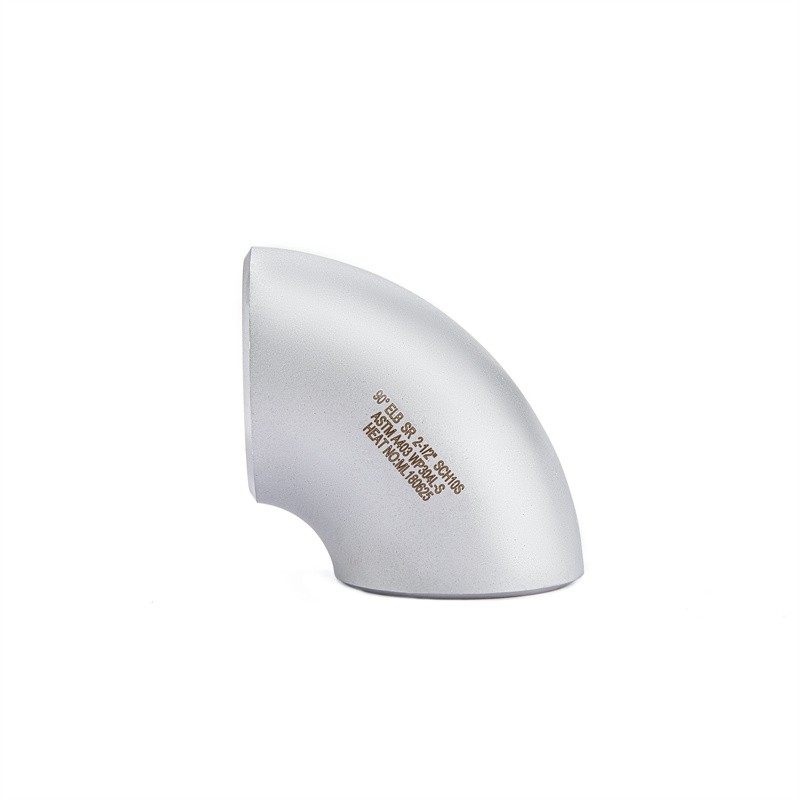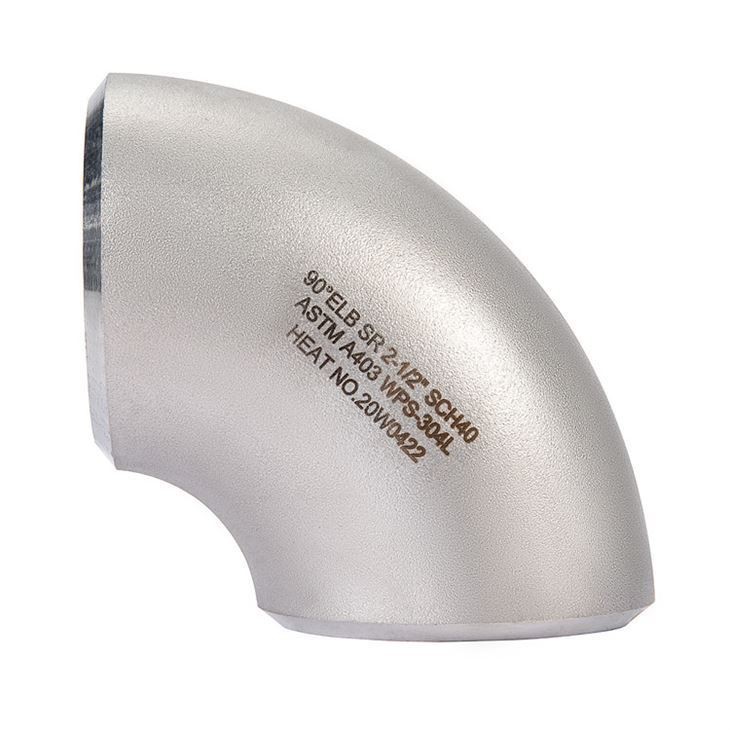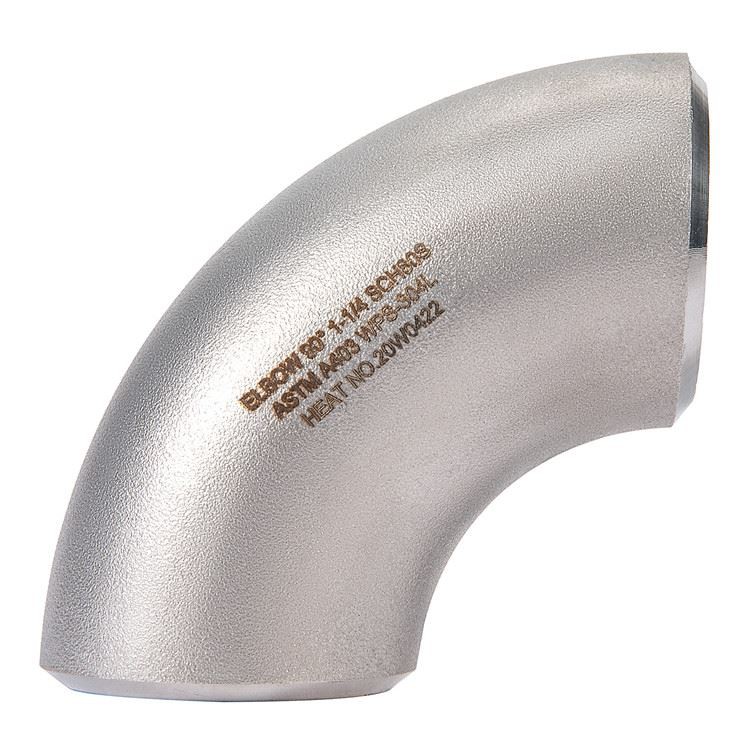Zhejiang Mingli Management Co., Ltd. was founded in 1994 with a registered capital of 50 million. We have more than 30 years of experience in production and processing of stainless steel pipelines.The factory area is 10,000+㎡, with 60+ sets of production equipment and 70+ sets of supporting molds. Our factory has a standing inventory of 800+ tons, and the annual production capacity can reach 5,000+ tons.We support OEM/ODM, processing according to the drawings, and also provide surface treatment such as sandblasting, sand rolling, mirror surface etc.
Why Choose Us
High productivity
Our factory covers an area of more than 10,000+㎡, equipped with 60+ sets of production equipment and 70+ sets of supporting molds. Our annual production capacity can reach 5,000+ tons to meet various pipe fitting ordering needs.
Caring service
Our team has more than 30 years of experience in pipe fitting manufacturing and sales, and is online 24/7 to provide you with timely product consultation and customized design services.
Multi-transportation
We provide different product transportation methods according to customer needs, including but not limited to TNT, FedEx Express, EMS, DHL, SF, UPS, etc.
Quality assurance
Our production processes and stainless steel pipe fittings products strictly comply with industry guidelines and quality standards, and have passed ISO9001, DAS and TS certifications.
Forged butt weld pipe fittings are manufactured according to ANSI/ASME B16.9. Butt weld fittings can be provided as elbows, tees, caps, reducers, and outlets (pipe nipples).
Stainless Steel Butt Weld Pipe Fittings
Stainless steel butt weld pipe fittings are commonly used components in piping systems for joining and connecting pipes of various sizes and configurations.
A butt weld reducer tee is a type of pipe fitting that allows for the connection of three pipes of different sizes in a pipeline.
Steel 90 degree elbow are designed for pharmaceutical applications and are used to connect stainless steel pipes that need to be turned.
In order to prevent the eye erosion due to heating, the welding current should not be too old, 20%less than the carbon steel electrode, the arc should not be too long, the layer is fast, and the narrow welding track should be.
The elbow 180 -degree card hoop is used to connect the two pipes or pipes at a certain angle. Purpose: Clamp the tube at both ends to achieve non -permanent sealing and provide a disassembly channel. Rust -resistant material: high pressure resistance, corrosion resistance,...
304 Stainless Steel 90 Degree Elbow
[Specifications] -The outer diameter of stainless steel pipe parts: 25mm / 1 ", wall thickness: 1 mm, a length of 90 degrees of radius to change the flow
[Advantages] -304 stainless steel 90 degree elbow welded short elbow, which is used to connect two pipes or pipelines from a certain angle to ensure that the possibility of tightly sealing and reducing the possibility of leakage
ASME 16.9 Stainless Steel Butt Welded Fittings, Reducing Tee For Connection
What Is Stainless Steel Seamless Elbow
Stainless steel elbow is installed between two pipes or tubings to allow a change of direction. 90° elbow or 45° elbow are normal angels, but there are other angel like 22.5°.Material is the most different between stainless steel elbow and carbon steel elbow. In accordance with the standard, elbow standard divide into AS(Australia Standard), DIN(German Standard), JIS(Japan Standard), ASTM, etc.Butt welding, threaded and socketed are usual ends machined for, corresponding to the different needs of the environment.Stainless steel elbows are categorized by design. Long-radius elbow's radius is 1.5 times the pipe diameter, the short one is the same radius with pipe's. The others, such as 90-degree, 60-degree, 45-degree elbows's radius equals pipe diameter too.
Benefits of Stainless Steel Seamless Elbow
Resistant to Corrosion
Stainless steel is considered one of the most corrosion-resistant materials. It offers resistance to a number of acids, including phosphoric, nitric and sulfuric acid.Moreover, it also offers resistance to chloride ions. The corrosion resistance of stainless steel is based on the thin passive film that protects the surface from electrochemical reactions.This protective layer is a thin oxide layer around the metal's surface. It is approximately five nanometers thick. Even though it is stable, it can be easily destroyed by localized scratches or pitting. However, the passive layer can repair itself.
Easy to Manufacture and Maintain
Stainless Steel 304 Pipe Elbow are widely used in various industries. The optimum service life of stainless elbows can reach up to 100 years.These elbows have been developed for many applications. They can be installed in both open and enclosed areas. Moreover, their installation is easy and convenient. Aside from the high performance and economic value of stainless steel elbows, they also have great compatibility with different systems.These elbows can be manufactured according to the requirements. However, you must be careful about the quality. You should store exposed surfaces correctly and make sure to clean them regularly.
It's 100% Recyclable
When it comes to the environmental benefits of stainless steel, there's a lot to be said. Not only is it one of the most environmentally friendly materials available, but it's also one of the most durable.The metal can be recycled and reused several times. It's also highly corrosion-resistant. While some other materials can be used for just a few years, stainless steel can be used for up to seventy years.In addition to being recyclable, stainless steel is an eco-friendly material. Unlike plastic pipes, stainless is not subject to toxic runoff.
Used in Automotive Industry
Stainless Steel Pipe Elbows are used in many applications. The material has excellent flow characteristics and is resistant to corrosion. It is also light, strong and durable.Various industries use stainless steel tubing, including the automotive industry. It is ideal for high-performance engines. In addition, it can withstand higher temperatures than other materials. So, it can be left outside for long periods without rusting.
45 degree steel pipe elbow
This kind of elbow is installed between two pipes so that the direction could be changed at an angle of 45 degrees. Since it creates lower frictional resistance, pressure also be lower.This kind of elbow is usually attached to copper, plastic, steel, cast iron, and lead. It could also be attached to clamps of stainless steel and rubber. As a result, it's widely used in chemical, food, facilities of water supply, electronic industrial and chemical pipelines, gardening and agriculture production, piping for solar power facilities, and pipelines for air conditioning.
180 degree steel elbow
This kind of elbow helps to change the direction at an angle of 180 degrees. Since it usually results in low pressure, its applications is limited to minimum deposition and low turbulence systems.

Industrial field
Elbows are used to change the flow direction or angle of pipes and are commonly found in delivery systems for water, gas, chemicals, petroleum and other fluids. Since the industrial environment has high requirements on the strength, corrosion resistance and high temperature resistance of the pipeline system, elbows are usually made of stainless steel, carbon steel or other special alloy materials.
Construction field
Elbows are used in the water supply and drainage systems of buildings and need to withstand the test of long-term use and environmental changes. The materials and manufacturing process of the elbow need to comply with the standards and regulations of the construction industry, to ensure that the pipes are connected correctly and adapt to the layout and structure of the building.
Chemical industry
Elbows are used in piping systems in chemical production processes and need to be corrosion-resistant, high-temperature resistant and pressure-resistant to adapt to special process requirements. The material and manufacturing process of the elbow must comply with the standards and regulations of the chemical industry to ensure the safe and reliable operation of the pipeline system.
Water conservancy field
Elbows are used in pipeline systems in water conservancy projects and need to withstand the test of long-term water flow impact and environmental changes. The material and manufacturing process of the elbow must be corrosion-resistant, wear-resistant and pressure-resistant to ensure the safe and reliable operation of the pipeline system.
Petroleum field
Elbows are very important in the petroleum industry, especially in the oil drilling and refining production processes. They are commonly used in oil wells, pipelines and storage tanks. The manufacture of petroleum elbows usually needs to meet strong requirements such as high temperature, high pressure and corrosiveness. Due to different application environments, the shapes and materials of elbows also vary.
Electric power field
Elbows are also widely used in various water pipes, gas pipes and oil pipes in power stations and substations. Elbows are commonly used to change the direction of pipes, provide discharges from piping systems, and connect coils. In the power industry, the function of elbows is to provide a smooth flow path for fluid and gas pipelines, thereby reducing fluid resistance and improving transmission efficiency.
How to Choose Stainless Steel Seamless Elbow
Material
There are many kinds of materials for stainless steel elbows. The most commonly used ones are 201, 304 and 316. 316 has more Mo than 304 chemical elements, and it is also used in different countries such as national standard, American standard, and German standard. Standard, these appearances are difficult to distinguish, and the price difference is relatively large. At present, there are still manufacturers who use syrup to distinguish when selecting raw materials, but there will be errors. The best way is to use a professional spectrometer to detect. High and easy to use.
Specification
In addition to determining the material, there are also size issues such as specifications and thickness. Most buyers do not have the technical support to check the product size. Take the most common 90-degree stainless steel elbow, the normal R=1.5D, but most manufacturers use molds in the market that are 1.25D, which is shorter than the standard size. Regardless of the 0.25D, there is a gap in the weight of the blanks. The reduced weight is the manufacturer's more profit. This should be paid attention to when purchasing. Of course, it does not rule out that you do need to purchase special non-standard products.
Delivery time
The customer estimates the processing time for the processing master according to the urgency of the order. Only the processing master also accepts, the transaction can be completed, otherwise it will only delay each other's time.
The Processing Method of Stainless Steel Elbow Is As Follows
Forging method
The end of the pipe or a section is punched by a swaging machine to reduce the outer diameter. The common forging machine has a rotary type, a link type and a roller type.
Rolling method
Generally, the mandrel is not used, and it is suitable for the inner edge of the thick-walled tube. The core is placed in the tube, and the outer circumference is pressed by a roller for round edge processing.
Stamping method
The pipe end is expanded to the required size and shape with a tapered core on the punching machine.
Bending forming method
There are three methods that are more commonly used. One method is called stretching method, the other method is called pressing method, the third method is roller method, there are 3-4 rollers, two fixed rollers, one adjusting roller, and adjustment. With the fixed roll distance, the finished pipe is curved.
Inflating method
one is to place rubber in the tube, and the upper part is compressed by a punch to make the tube convex and convex; the other method is to form a hydraulic bulge, fill the middle of the tube with liquid, and the liquid pressure drums the tube into the required The shape, the bulk of the production of bellows is used in this way.
How to Maintain Stainless Steel Seamless Elbow




1. The stainless steel elbows stored for a long time should be inspected regularly. The exposed processing surface must be kept clean, cleaned of dirt, and stored neatly in a ventilated and dry place indoors. Stacking or open storage is strictly prohibited. Always keep the stainless steel elbow dry and ventilated, keep the device clean and tidy, and store it according to accurate storage methods.
2. When installing, the stainless steel elbow can be directly installed on the pipeline according to the connection method, and the installation is carried out according to the used position. Under normal circumstances, it can be installed at any position in the pipeline, but it needs easy-to-operate inspection. Note that the medium flow direction of the cut-off stainless steel elbow should be upward from the vertical valve disc. The stainless steel elbow can only be installed horizontally. When installing and maintaining stainless steel elbows, pay attention to the tightness to prevent leakage and affect the normal operation of the pipeline.
3. When using stainless steel elbow ball valves, globe valves, and gate valves, they should only be fully opened or fully closed, and should not be used to adjust the flow rate to avoid erosion of the sealing surface and accelerated wear. There is an inverted sealing device in the gate valve and the upper threaded stop valve, and the handwheel is turned to the uppermost position and tightened to prevent the medium from leaking from the packing.
Certificate

Our factory

FAQ
Hot Tags: stainless steel seamless elbow, China stainless steel seamless elbow manufacturers, factory, short radius weld 90 elbows, elbows stainless steel, 3cr13 elbows, galvanized coupling fitting, perforated stainless steel elbow, ss elbow 90 degree stainless steel elbow

















